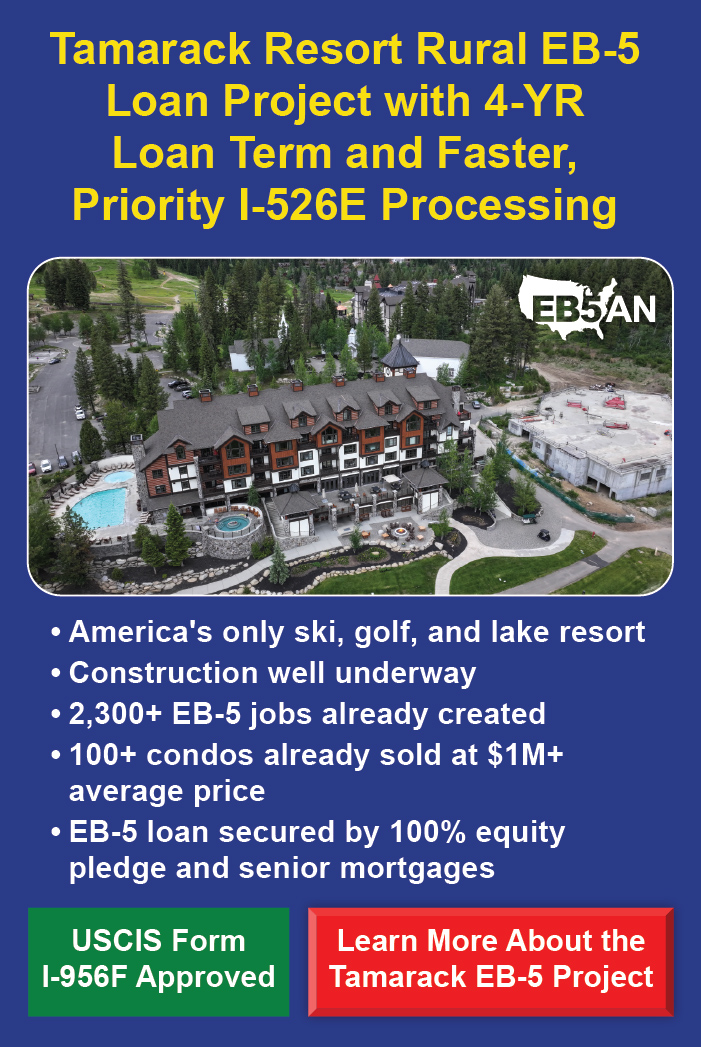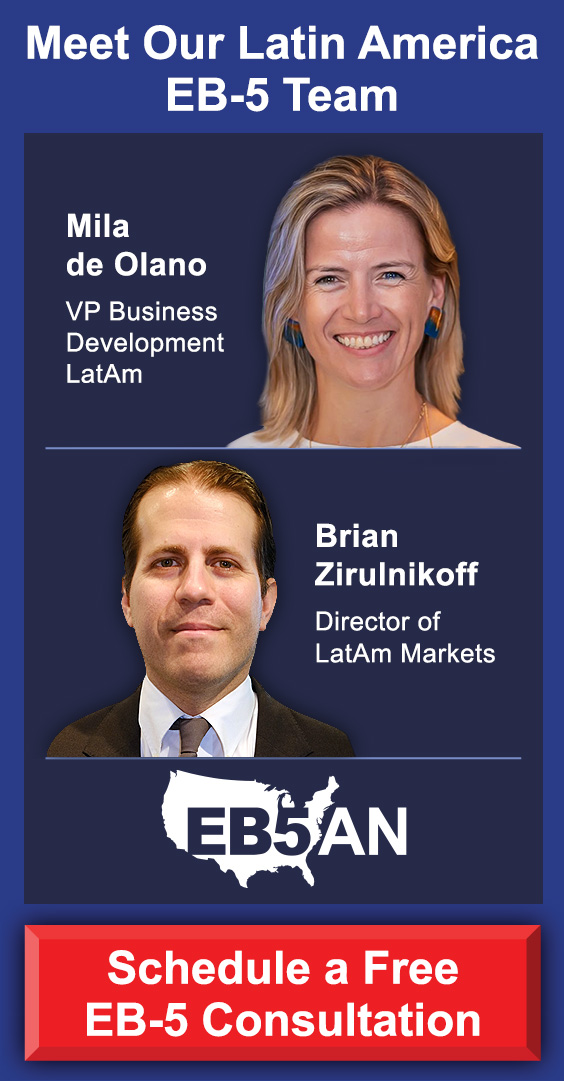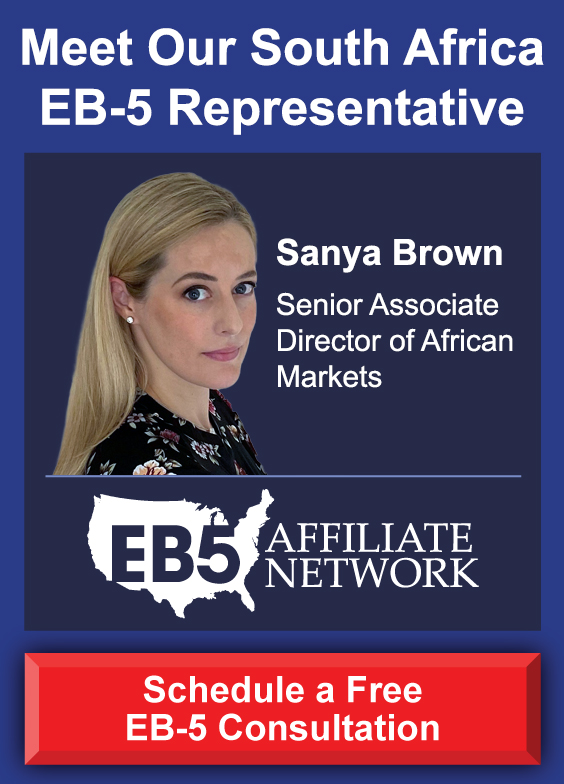Canada and the United States share an extensive border, cultural ties, and a thriving economic relationship. For many Canadians, the prospect of relocating to the U.S. is an appealing one. Whether for business, lifestyle, or personal reasons, moving to the U.S. can provide new opportunities. One of the most popular and viable pathways to U.S. residency for Canadians is the EB-5 Immigrant Investor Program, also known as the EB-5 Green Card.
This guide will walk you through everything you need to know about the EB-5 Green Card for Canadians, from understanding the program and the application process to the advantages and challenges of obtaining a U.S. Green Card.
What Is the EB-5 Visa?
Why Should Canadians Consider the EB-5 Green Card?
How Does the EB-5 Process Work?
Employment Authorization Documents (EADs) and Advance Parole (AP) Travel Documents
Special Considerations for Canadian EB-5 Investors
EB5AN Can Help Canadian Citizens Obtain Green Cards
What Is the EB-5 Visa?
The EB-5 visa is an immigrant investor visa program that provides a pathway to U.S. permanent residency (Green Card) for foreign nationals who invest in a new commercial enterprise that creates jobs in the U.S. The program was created in 1990 as a means to stimulate the U.S. economy by attracting investment from foreign individuals.
The EB-5 program allows investors, along with their spouses and children under 21, to apply for U.S. permanent residency, which grants the ability to live and work in the U.S. permanently. This program has become a popular option for foreign nationals looking to invest in the U.S. and secure permanent residency.
Why Should Canadians Consider the EB-5 Green Card?
Canada has long been a source of high-net-worth individuals interested in relocating to the United States. There are several reasons why Canadian investors might choose the EB-5 visa route over other immigration options:
Access to U.S. Markets and Opportunities
Many Canadians who own businesses or work in industries with strong U.S. connections may find the EB-5 visa beneficial as it allows them to expand their operations or gain access to the U.S. business landscape.
Education and Healthcare
The U.S. offers an array of world-class universities and hospitals that attract international students and professionals. For Canadian families with children, securing a Green Card might be an appealing way to provide educational and healthcare opportunities for their children. Canadian students constitute one of the largest groups among international students enrolled in U.S. schools.
Also, U.S. healthcare is among the best in the world, with its leading hospitals and highly skilled healthcare professionals. Permanent residency in the U.S. would allow Canadians who follow the EB-5 route to have access to these exceptional facilities and professionals.
Quality of Life
Many Canadians, particularly those living in colder climates, choose to relocate to the U.S. for warmer weather, better job prospects, and a diverse range of lifestyle options available across the country.
How Does the EB-5 Process Work?
The EB-5 program requires investors to make a substantial financial commitment in exchange for U.S. residency. Below is a breakdown of the key components of the EB-5 process:
Eligibility Requirements
To be eligible for the EB-5 program, applicants must meet the following criteria:
Investment Amount
The minimum investment required for the EB-5 visa is $1,050,000, or $800,000 if investing in a targeted employment area (TEA). A TEA is a designated rural area or a region with high unemployment rates.
Job Creation
The investment must create at least 10 full-time jobs for U.S. workers. These jobs must be directly or indirectly created through the investment.
At-Risk Investment
The investment must be at risk of loss, meaning the investor must contribute capital with no guarantee of return or profit.
Lawful Source of Funds
The EB-5 program requires investors to prove that their investment funds were obtained through lawful means. This includes providing detailed documentation tracing the funds from their origin—such as income, property sales, loans, or gifts—all the way to the EB-5 investment.
Types of Investments
Investors can choose from two different types of investments:
Direct Investment
The investor directly invests in and manages a new business enterprise that meets the job creation requirements directly.
Regional Center Investment
The investor can choose to invest through a USCIS-approved regional center, which is an organization designated by the government to handle EB-5 investments. Regional centers often pool funds from multiple investors into job-creating ventures. The job creation requirements are easier to fulfill in the case of regional center investments, and more than 96% of all EB-5 investors choose this pathway.
The EB-5 Application Process
The EB-5 process involves several steps, each with its own set of requirements and possible challenges. Here’s a simplified breakdown of how it works for most Canadian applicants:
Choose an Investment Project: Select an investment that meets the EB-5 criteria. Working with an experienced EB-5 team can help with the due diligence at this stage.
File I-526E Petition: Submit the I-526E Immigrant Petition by Regional Center Investor to U.S. Citizenship and Immigration Services (USCIS) along with supporting documents. Your immigration attorney will assist you with this.
Consular Processing or Adjustment of Status: Once the I-526E petition is approved, applicants can proceed with either consular processing (if they are outside the U.S.) or adjustment of status (if they are already in the U.S. on another visa).
Canadian investors who are already in the U.S. on a valid nonimmigrant visa—such as a work, student, or visitor visa—may benefit from the option of concurrent filing. This allows them to file their Form I-526E and Form I-485 (adjustment of status) at the same time, enabling them to remain in the U.S. legally while their EB-5 petition is being processed. Concurrent filing can also provide access to benefits like work and travel authorization during the wait. We will cover this in more detail below.
Conditional Green Card: If their application is approved, applicants receive a two-year conditional Green Card.
File I-829 Petition: After two years, investors can submit the I-829 petition to remove the conditions on their Green Card. This petition demonstrates that the investment has created the required jobs.
Permanent Green Card: If the I-829 petition is approved, the investor and their family members are granted permanent U.S. Green Cards. They become eligible to apply for U.S. citizenship by naturalization after meeting the five-year residency requirement, which starts from the date they receive their initial conditional Green Card.
Employment Authorization Documents (EADs) and Advance Parole (AP) Travel Documents
As mentioned above, EB-5 investors who are adjusting status in the U.S. can apply for two essential documents while waiting for their Green Cards.
Employment Authorization Document (EAD)
This document allows the investor (and their family) to work in the U.S. while the EB-5 petition is being processed.
Advance Parole (AP) Travel Document
The AP allows the investor and their family to travel outside the U.S. without losing their status while their application is pending.
Special Considerations for Canadian EB-5 Investors
The EB-5 Green Card remains a popular immigration pathway for individuals worldwide, but it often comes with added complications for investors from high-demand countries like India and China. In contrast, Canadian-born investors enjoy a more streamlined experience, free from long wait times and visa backlogs. They have the flexibility to invest in either rural or high-unemployment TEAs without concerns about visa retrogression. That said, the fastest route currently available for new Canadian applicants is to choose a rural EB-5 project and take advantage of concurrent filing when eligible.
Beyond the benefits of being from a non-backlogged country, Canadian investors also gain the opportunity to settle permanently in an English-speaking, culturally diverse, and entrepreneur-friendly environment—one that closely mirrors the values and lifestyle of their home country.
Below are some additional reasons why the EB-5 Green Card is an especially compelling option for Canadian citizens.
Beneficial Tax Rates in the U.S. vs. Canada
Canada’s tax system can sometimes create challenges for high-net-worth individuals, particularly since the unveiling of the program “Tax Fairness for Every Generation” in April 2024 which increased tax rates. The U.S. tax system, while different, may offer some advantages depending on the individual’s financial structure. Additionally, the ability to diversify assets through U.S.-based investments or real estate can be appealing.
Investing through the EB-5 program may have significant tax implications, both in the U.S. and Canada. Canadian citizens are generally taxed based on their global income, meaning they may need to report their U.S. income on their Canadian tax returns. However, Canada and the U.S. have a tax treaty that helps prevent double taxation.
It’s essential to work with tax professionals who understand the complexities of cross-border tax laws and can help navigate the taxation process when making an EB-5 investment.
From TN Visa to EB-5 Green Card
Some Canadian investors may already be in the U.S. on a TN visa, a non-immigrant status for NAFTA professionals. For those looking to transition from a TN visa to a Green Card, the EB-5 program can be an ideal option.
The TN visa allows Canadian citizens to live and work in the U.S. in specific professional roles. However, the TN visa is a non-immigrant visa, meaning it is temporary and does not provide a path to permanent residency.
By investing in the EB-5 program, TN visa holders can apply for U.S. permanent residency without having to leave the U.S. This is a particularly beneficial option for those already living and working in the U.S. who wish to secure their future in the country. However, as the TN visa does not allow for dual intent, TN holders pursuing EB-5 must carefully time their adjustment of status application, ideally with guidance from an experienced immigration attorney.
EB5AN Can Help Canadian Citizens Obtain Green Cards
For Canadian citizens looking to establish permanent residency in the United States, the EB-5 Immigrant Investor Program offers a viable and strategic path. With the ability to invest in an EB-5 project and gain U.S. residency for themselves and their families, Canadians can access the vast opportunities the U.S. has to offer. By understanding the process, consulting with experts, and ensuring the investment is carefully chosen, the EB-5 visa can be the key to realizing the American Dream.
EB5AN has helped more than 2,300 families from 70+ countries relocate to the United States as lawful permanent residents. Our team has more than a decade of experience and offers clients first-rate, low-risk EB-5 regional center projects with a 100% USCIS project approval rate.
If you would like to know more about how you can get an EB-5 Green Card as a Canadian national, book a free call with our expert team today.












